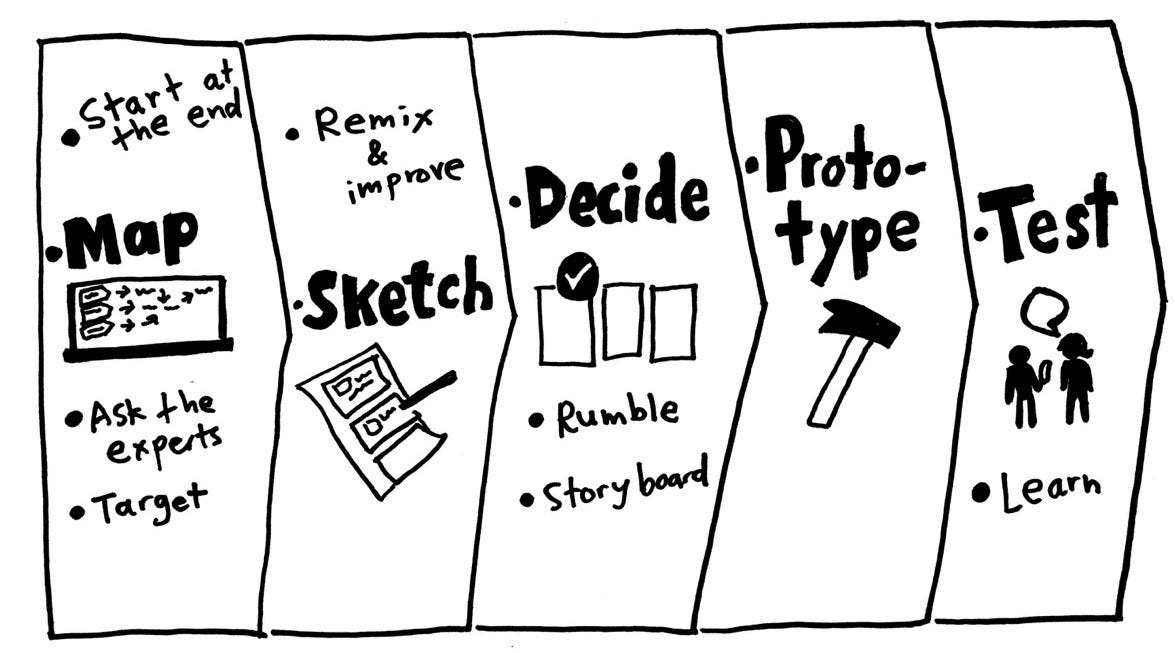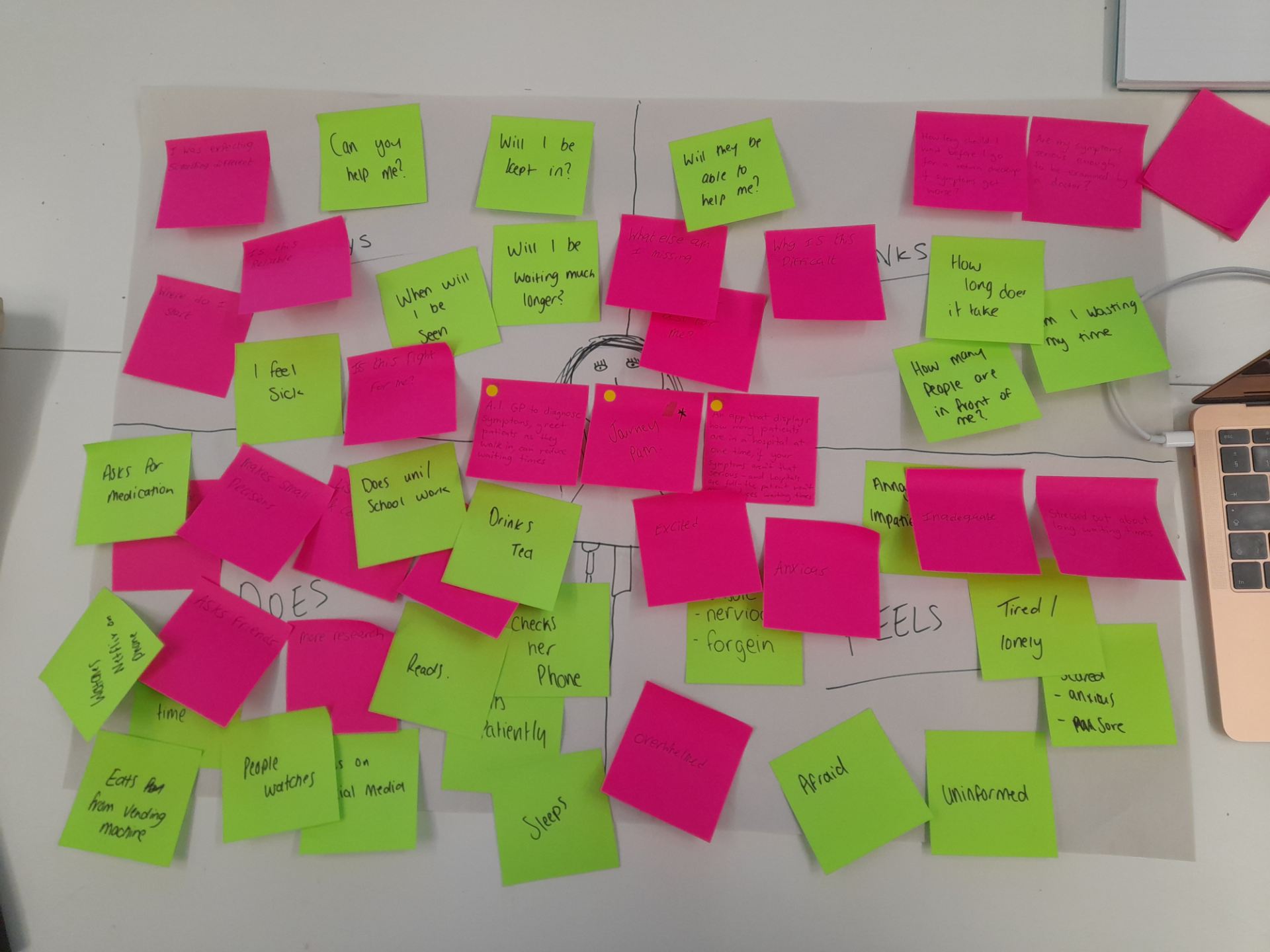This week, we carried out a design sprint exercise in a group.
The design sprint can be described as a five-day process for answering critical business questions through design, ideating, design prototyping, and validating ideas. The goal of a design sprint is then to create a working prototype and test it with users within a week and incorporate user feedback early in the process. But it’s also good for quickly bringing team members under a shared idea and vision for a design project, each working towards the same goal, and that was the main purpose for this exercise. Instead of a week however, we only had a few hours, which made this project more challenging.

We were then given our design problem to solve:
How might we ease the pressure on accident and emergency departments?
Step 1 Understanding the Problem
It was important for this design task, that we understood the question being asked and that we could also pinpoint the existing paint-points. What are some of the solutions to these problems? In a group, we then decided to vote for the best solutions that were brought up and that we could move forward with implementing.
Some issues identified include:
- The feeling of being lost in the hospital
- The lack of intimacy
- The feeling of loneliness for those who could not come with a friend or a relative
- Uncomfortable waiting rooms
I enjoyed the team-work part of this exercise. It was interesting to communicate with other designers, getting feedback, input and ideas from others to come up with a shared design.

This was an example of the empathy mapping section we did for this exercise. An empathy map is a type of brainstorming or a mindmap that is used to identify things we know about the user. Specifically what the user feels, their actions and their behaviour as well as their pain-points.
From there, we created a user journey map which allowed us to narrow down the things that the user would experience with our unique design concept. Including things such as happy moments, questions the user might ask, or possible opportunities. I found this part of the exercise useful in terms of considering the user’s needs.

After defining the problem, and ideation – we eventually narrowed down our concept even further to create a design that the group was happy with in solving the original design problem.
For my own app concept for this module, some of the things I learned doing this exercise may be useful also. In a short amount of time of just a few hours, we managed to get a lot of quality work that would normally take a week, completed. This made me realise that I’m able to get more work done if I just push myself a little harder, and manage my time better. Allocating only a specific time-slot to complete one task before moving on to the next could be something that I could implement for this module. And it would save a lot of time to do more research.
I also improved upon my teamworking skills. I believe one of the qualities a good designer should have is that they should be assertive – and can easily communicate their ideas to others, especially their clients. This is something I continue to build upon.